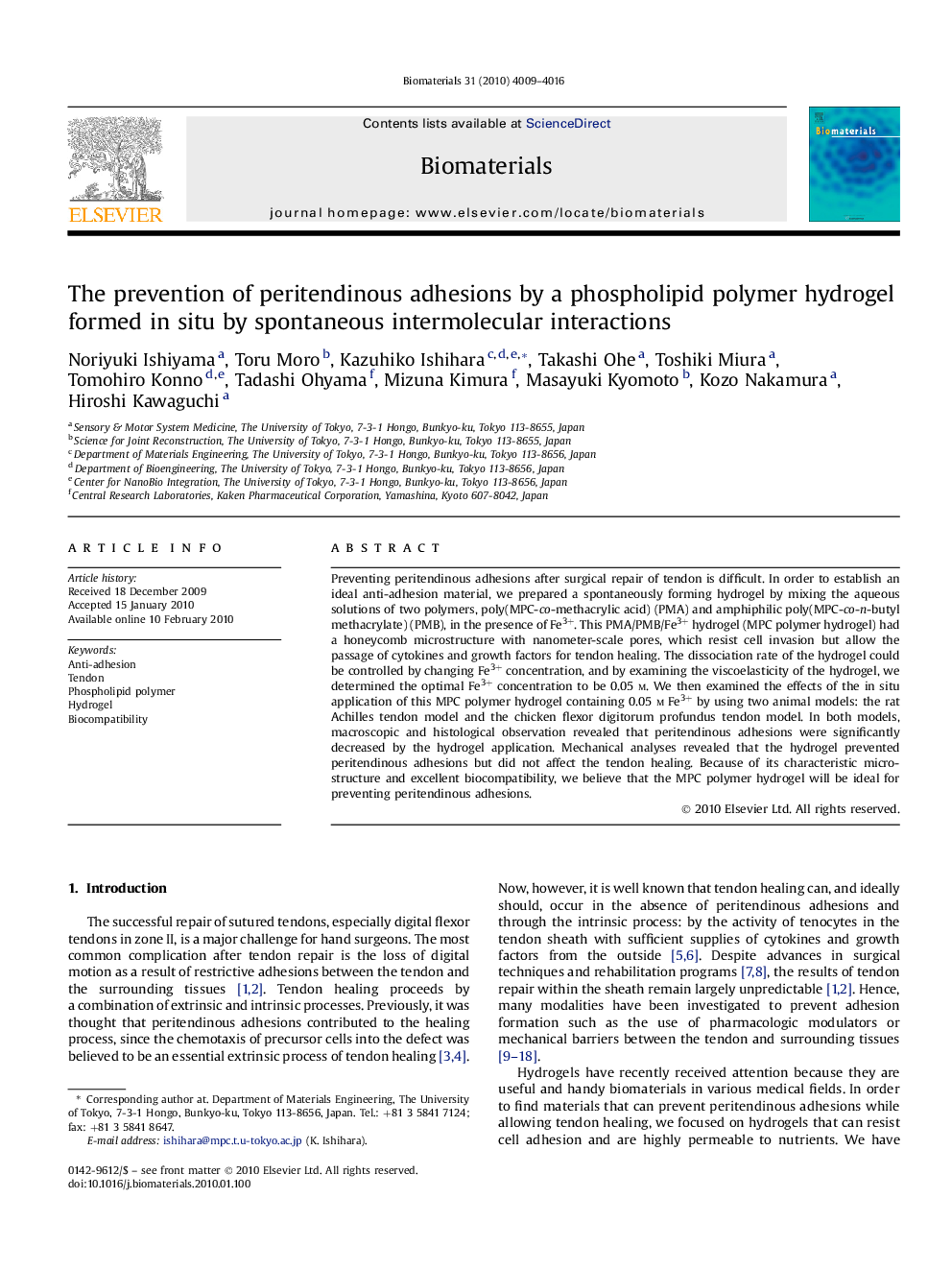| Article ID | Journal | Published Year | Pages | File Type |
|---|---|---|---|---|
| 9107 | Biomaterials | 2010 | 8 Pages |
Preventing peritendinous adhesions after surgical repair of tendon is difficult. In order to establish an ideal anti-adhesion material, we prepared a spontaneously forming hydrogel by mixing the aqueous solutions of two polymers, poly(MPC-co-methacrylic acid) (PMA) and amphiphilic poly(MPC-co-n-butyl methacrylate) (PMB), in the presence of Fe3+. This PMA/PMB/Fe3+ hydrogel (MPC polymer hydrogel) had a honeycomb microstructure with nanometer-scale pores, which resist cell invasion but allow the passage of cytokines and growth factors for tendon healing. The dissociation rate of the hydrogel could be controlled by changing Fe3+ concentration, and by examining the viscoelasticity of the hydrogel, we determined the optimal Fe3+ concentration to be 0.05 m. We then examined the effects of the in situ application of this MPC polymer hydrogel containing 0.05 m Fe3+ by using two animal models: the rat Achilles tendon model and the chicken flexor digitorum profundus tendon model. In both models, macroscopic and histological observation revealed that peritendinous adhesions were significantly decreased by the hydrogel application. Mechanical analyses revealed that the hydrogel prevented peritendinous adhesions but did not affect the tendon healing. Because of its characteristic microstructure and excellent biocompatibility, we believe that the MPC polymer hydrogel will be ideal for preventing peritendinous adhesions.
